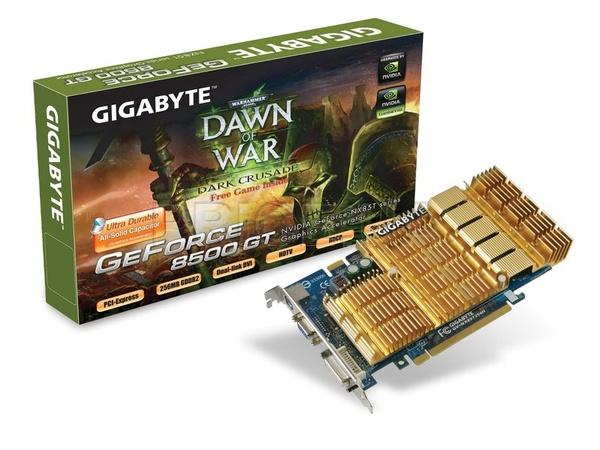GeForce 8500 GT
The 8500GT uses a different chip than the 8600GT. The G86 graphics controller contains a block of shader processors that is halved compared to the G84 (8600 video card chip); we also take into account the reduced clock frequency. The computing capabilities, and hence the performance in calculating shader effects, of the 8500GT video card are quite modest. In addition, along with shader units, texturing units (TMUs) have also been reduced, which are combined into one module according to the new NVIDIA architecture. Only the ROP blocks responsible for anti-aliasing, blending, clipping of invisible surfaces and recording results are preserved in full. Involuntarily, it is surprising that the suffix "GT" is present in the name of the video card, which means a productive version.

What, then, can be compared to the new video card? Most likely, after all, with the 7600GS. Although the new chip is outperformed by the old one in terms of the total number of shader processors and TMUs, the 8500GT has a slight but steady advantage due to the new architecture and increased clock frequency of the shader unit.
Specifications NVIDIA GeForce 8500 GT
| Name | GeForce 8500 GT DDR2 |
| Core | G86 |
| Process technology (µm) | 0.08 |
| Transistors (million) | 210 |
| Core frequency | 450 |
| Memory frequency (DDR) | 400 (800) |
| Bus and memory type | GDDR2/ GDDR3128 Bit |
| Bandwidth (Gb/s) | 12.8 |
| Unified shader blocks | 16 |
| Frequency of unified shader units | 900 |
| TMU per conveyor | 8 (total) |
| ROP | 8 |
| textures per clock | 8 |
| textures per pass | 8 |
| Shader Model | 4.0 |
| Fill Rate (Mpix/s) | 3600 |
| Fill Rate (Mtex/s) | 3600 |
| DirectX | 10.0 |
| Anti-Aliasing (Max) | SS&MS - 16x |
| Anisotropic Filtering (Max) | 16x |
| Memory | 256/512 |
| Interface | PCI-E |
| RAMDAC | 2x400 |
Some faster solutions had GDDR3 memory on board , which allowed the card to slightly increase the gaming speed of the card.



